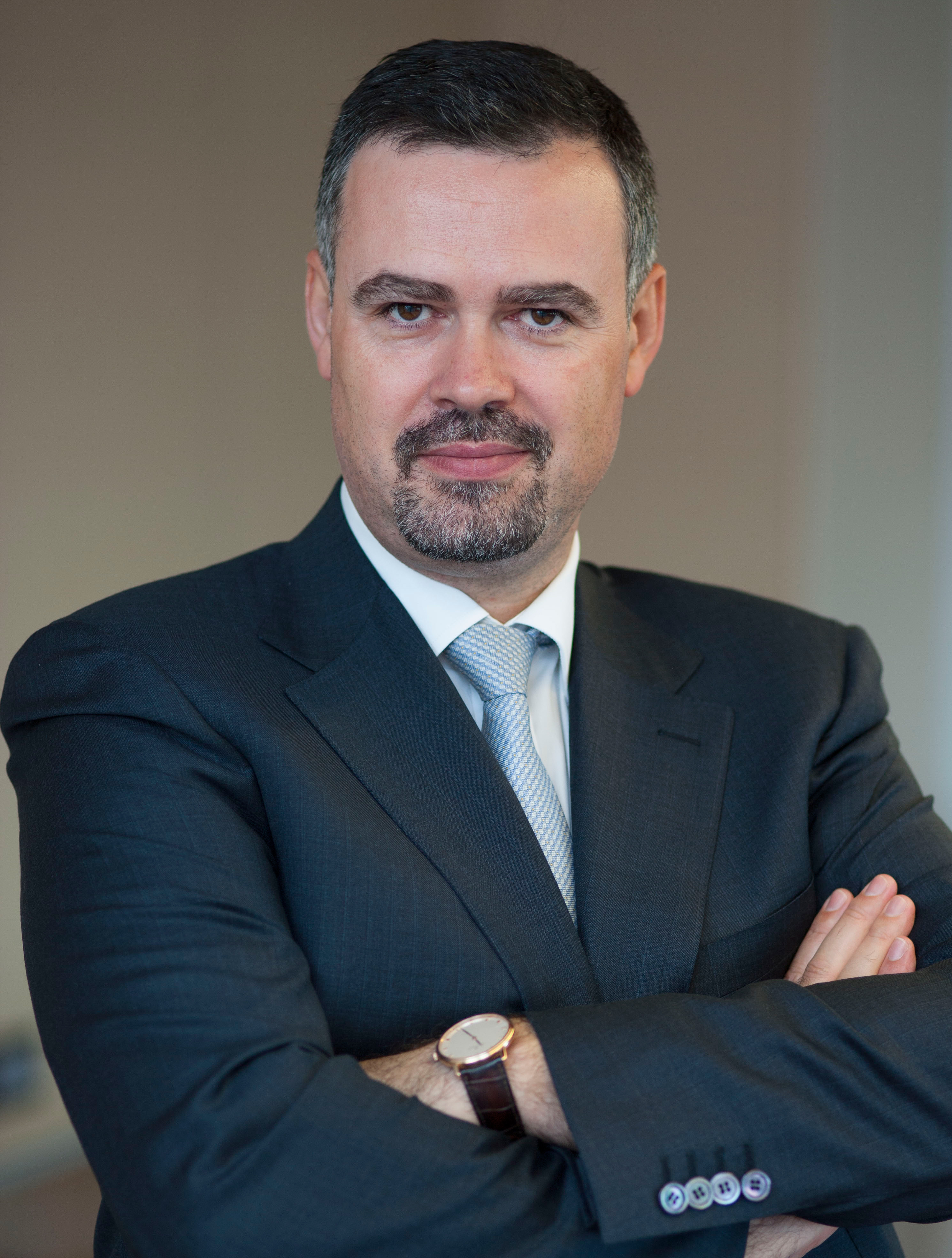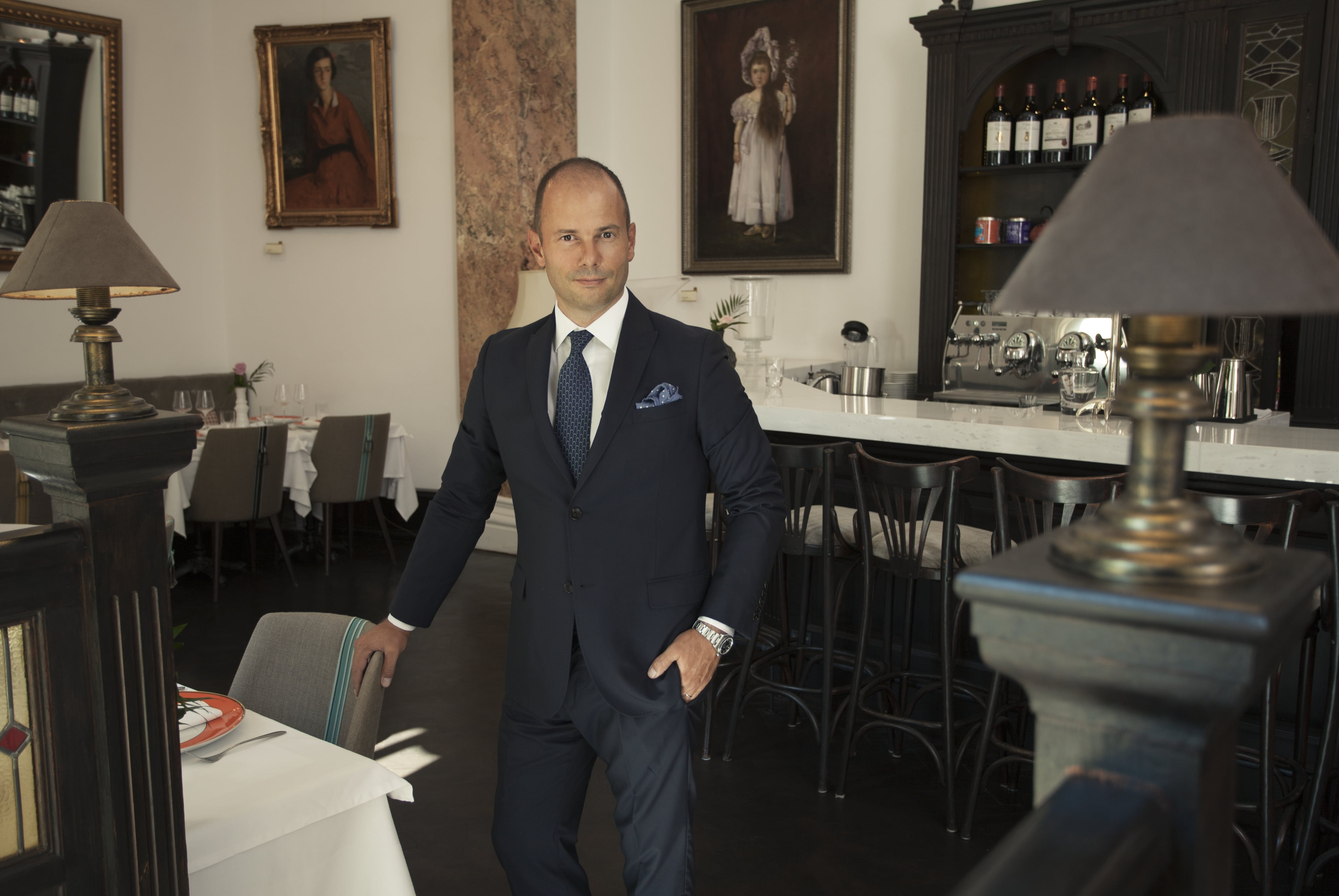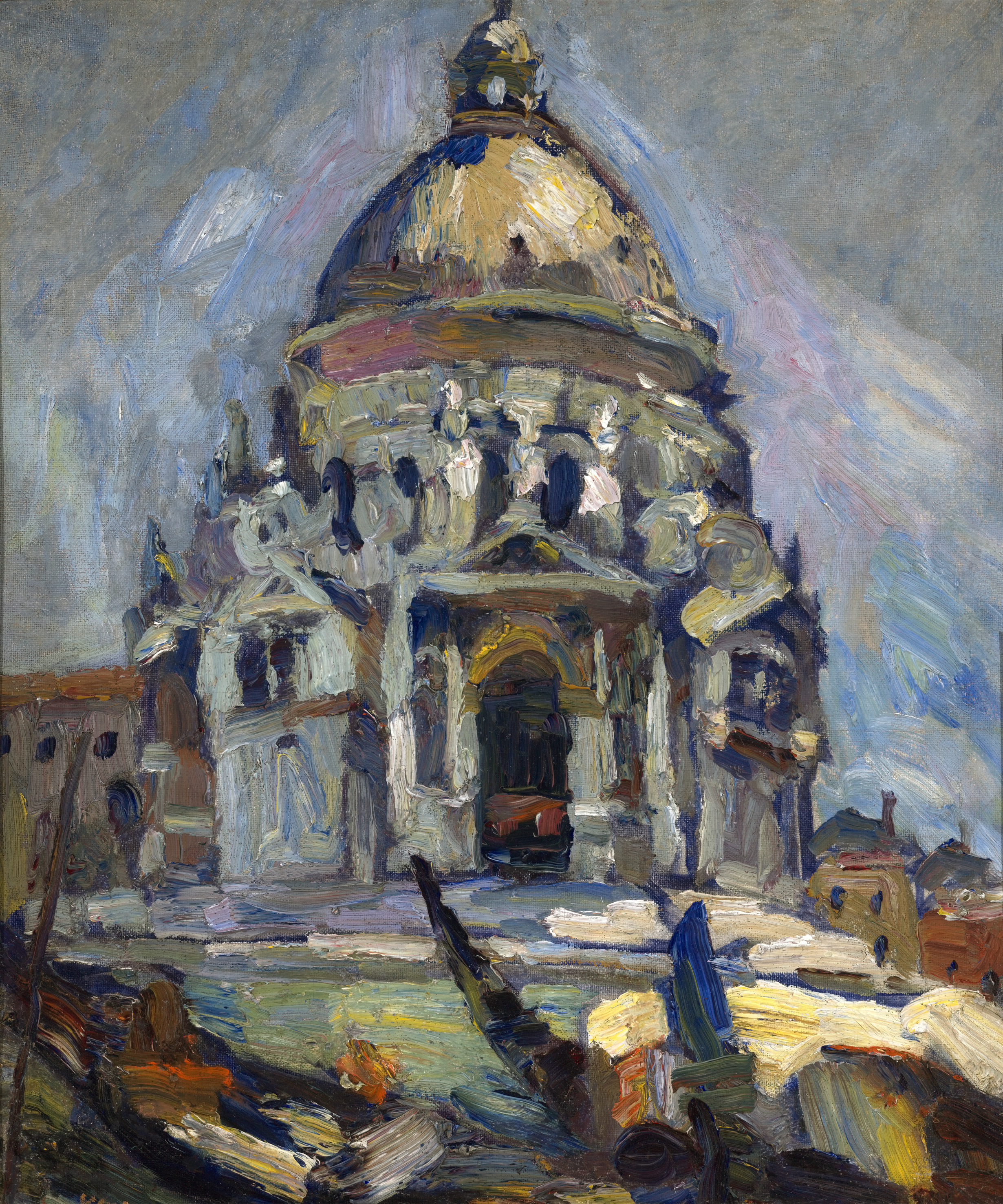Although art is increasingly seen as a way of safeguarding value, most investors build collections out of sheer passion. Fine art collectors Florian Nitu, Cristian Preotu, and Ovidiu Sandor shared with BR their motivation behind buying art and a wealth of dos and don’ts for aspiring collectors.
When the financial markets are in turmoil, many investors incorporate art as an alternative asset class into their portfolios in the interest of diversification. Moreover, art has a potential low risk and brings higher returns than traditional assets. Nevertheless, only a very small percentage of art buyers regard art as a financial product or see art collecting as a pure investment. According to Deloitte’s Art&Finance Report 2017, only 3 percent fall into that category. Most collectors on the art market (65 percent), the report found, are driven by the social and emotional aspects of collecting art, combined with the potential to increase and safeguard value. Similarly, a large majority of art professionals (86 percent, up from 79 percent in 2016) said that their clients buy art and other collectibles for emotional reasons primarily, while also focusing on investment value.
The creation of a collection, Deloitte’s report also argues, is, contrary to popular wisdom, often an adventure started by an individual, sometimes a couple and more rarely a whole family. BR spoke to three such individuals whose appreciation of fine art has led them to build solid collections.
In a recent piece for artsy.com, Evan Beard, national art services executive at U.S. Trust, Bank of America Private Wealth Management, used his experience in leading the art division of a large private bank to classify art collectors into four ‘tribes’. ‘Serious’ collectors, he argues, tend to fall into one of these, each characterized by their own behaviors, strengths, and motivations for seeking, acquiring, and appreciating art.
The ‘enterprising collector’, Beard found, is typically a first-generation entrepreneur and an art history lover who engages through collecting in a ‘moral combat to identify and elevate the art that matters’. The ‘connoisseur’, the intellectual of the art market and most aesthetically independent of all, puts relentless effort and devotion into furthering their expertise while remaining unaffected by accepted taste and being ‘deeply invested in the opinions of a select few’. The last two tribes bring together the extremes: the trophy hunter, whose buying power could allow them to simply ignore the infrastructure of art, and is driven primarily by ‘the adrenaline of procuring’, and ‘the aesthete’, the most elusive and reclusive of them, who sees art as ‘an emotional extension of their being, separate from status or financial gain’. Most local collectors, however, rarely fall into only one of these categories. Rather complex characters, they combine traits from two or more of these tribes in a way that makes them unique in their impact on the domestic art market and mission on the local art scene.

Don’t buy anything without a contract, never pay cash, avoid off market deals
Lawyer Florian Nitu bought the first piece of what would later become an art collection focused on Romanian painters back in his student days, in the ‘90s. Now the managing partner of Bucharest-based law firm Popovici Nitu Stoica&Asociatii, he is largely recognized as one of the most experienced M&A local legal counsels, and, in the relevant circles, as a consummate art collector.
“I bought my very first work of art, a sketch by Romanian portraitist Corneliu Baba (1906-1997), at a fair while I was still a law student. The asking price was USD 100 but I brought it down to 80. It was a small fortune for me back then,” he says. “I still have it,” he notes, adding that the most valuable artworks are not necessarily the most expensive, but those with personal value, such as works he commissioned from his favorite artists.
A ‘connoisseur’ with traits borrowed both from ‘the enterprising collector’ and ‘the aesthete,’ he is primarily driven by a visceral response to the object while being aware of his power to filter and reinterpret art history through educated collecting. “For me, the act of collecting is nothing but an occasion for a profound aesthetic empathy,” he says. “I don’t value much theoretical distinctions, schools and trends within artistic thought. Instead, I believe that educating your own aesthetic empathy is the best way to describe one’s main drive for collecting art – the joy you feel while looking at something beautiful.”
With a collection built around Romanian art spanning the ‘60s through to the ‘90s, he is mainly drawn to conceptual art. “Although a work of art can only be assessed in a holistic way, I believe it is conceptual art, where the idea plays a role as well, which attracts me the most,” he says. “If the artistic narrative stands out, even though it is not always backed by the quality of the technique, it can make an artwork attractive. I’ve bought works where the technique left something to be desired but whose narrative was striking, or had shocking chromatics,” he says.
Despite being extremely well-connected and enjoying wide exposure, when he buys art he does so independently, and, as a collector, he covets secrecy, because, as Beard puts it, “information is currency” to the enterprising collector’s tribe. “I do not have advisors. I know hundreds of artists and I know their views but I never take anyone’s advice on whether to buy or not to buy. Also, I never buy art as an investment,” he says. “I don’t believe someone who buys from passion has any guarantee that they will ever obtain a return on their investment. But when one is genuinely passionate, this is not a factor. An educated collector is always happy with their collection,” he adds.

In fact, for Nitu, who is well grounded in the local art market but updates his outlook by regularly visiting international vernissages and some of the world’s biggest art fairs such as Frieze and Art Basel, education is an important keyword. “I advise aspiring collectors to go to museums. To see all Romanian museums, go on a tour. Also, visit the memorial houses that have exceptional collections. After that they will get a feeling for it and know what to do,” he advises.
Then, buying from certified sources is paramount. “Buy from the regulated market exclusively,” he advises, adding that he never buys off market from individuals, never pays cash and has never purchased any artwork without a contract. “There is a black market I don’t want to support,” he says. Then, “authenticity is crucial – the biggest problem on the local market is fakes. In Romania there is an enormous secondary ‘fakes market’,” he says, adding that, as a lawyer he has always advised in favor of destroying fakes, regardless of their aesthetic value.
“Then, when buying, always read carefully through the terms and conditions of the auction house,” he cautions. “In Romania, most auction houses place the liability for the certification of origin and authenticity on the insurer,” he explains. The market is evolving though, spurred by the biggest local auction house, Artmark, he says, with which his law practice has partnered to create the Index of the Art Market.
One last piece of advice is to “know when to say no,” he says, recalling an inspired meeting with an Indian artist whose work he describes as ‘abstract expressionism’ in Soho last spring, whose works stirred a strong passion. “I know people who’ve sold everything to buy something like that but I advise against it,” he says.
Alongside enriching his collection Nitu is involved in the local art market via an association he set up to support local artists.

Read, don’t go against your instinct, start with the classics
Sharing with Nitu an appreciation for the works of Romanian artist Gheorghe Petrascu (1872-1949) is entrepreneur Cristian Preotu, owner of Bucharest-based Le Manoir Group. A seasoned collector, he buys art to hone his appreciation for beauty, as well as to enhance the experience patrons have when dining in his restaurants.
A ‘connoisseur’ to the core, who believes that ‘genuine art is an incentive to think,’ he shares with the ‘enterprising collector’ the drive to support art that will matter. His collection is predominantly made up of works by Romanian classical painters, with some contemporary and modern notes. “Its specificity is that it is very rich in portraits and in landscapes and urban scenes that show human figures, and less in compositions or still life – although I own some of those, as well.”
He started collecting in his 20s, when he purchased a canvas from painter Sorin Ilfoveanu. “I recall it was a beautiful painting, showing the painter with a cat. It is a classical theme for the 2000s. It cost around EUR 1,200, and I still have it.”
Preotu, meanwhile, whose collection numbers around 50 artworks, owns pieces by painters Eustatiu Stoenescu, Ipolit Strambu, Octav Bancila, Arthur Verona, Rudolf Schweitzer-Cumpana, François Gall, Constantin Piliuta, Ioana Batranu and Ion Pacea, among others.
Connoisseurship, Beard argues, “usually begins with a spark but it is developed over time, through relentless effort and devotion.” For Preotu, discovering a new artist or genre is akin to learning a new language and overall an experience that “goes beyond the image, letting all the information do its part, from the composition, to the shades, to each detail. As with music and gastronomy, the further you go, the more you understand it, the bigger the satisfaction. I read a lot about the types of art that interest me – usually painting – classical and contemporary, and sculpture. And I have developed quite the collection of art books and albums. Especially when I buy a portrait, I do everything I can to discover who the person in the painting was, as well as their stories. It fascinates me!”

For Preotu, art is a means to beautify ordinary, day-to-day experiences. “It is quite marvelous to have dinner next to a painting by Nicolae Tonitza, because it adds value to the moment, making it more memorable,” he says, adding that his entire collection is displayed either in his home, office or restaurants. “Art is such an important part of my restaurants’ concepts. For example, with Relais & Châteaux Le Bistrot Français, I chose to focus on portraits by famous Romanian painters, showcasing characters that were contemporary to the building, back when this was the residence of French architect Albert Galleron,” he notes.
Preotu’s chief advice is to buy only what you love and to read as much as possible about the artist beforehand to be able to assess prices correctly and avoid traps. As for first-time investors, “just like when buying wines and real estate, the best way to start is to find the big names that have already earned appreciation, the so-called ‘sure values’ and try to get them at the best price. Or, if you feel like taking a chance, to keep an eye open for young artists and choose the ones that show talent. It might be a bet, but, if it proves it was the winning one, you might end up making a small fortune from your investment,” he advises. “Still, to anticipate an artist’s success, you need to have a trained eye, experience and knowledge. You can’t place a bet on the future, without knowing very well the history of art,” he cautions.
“Stay connected to museums and galleries,” advises Preotu – who regularly attends private tours in Europe’s biggest museums – and network as much as possible. Not least, newcomers should be aware that buying art is also a way to support the development of the art world and ensure continuity. “For the first time since I started collecting art, one of my artworks will be part of an exhibition in a museum. A canvas by Tonitza will be displayed at the Targu Mures art museum for two months, and that’s pretty exciting.”
And his involvement with the local art scene will soon go up a level. In a bid to bring private art collections closer to the public, he is currently working to set up a museum of private collections. Planned to open in June of next year, the private museum will be located near the Bucharest Atheneum, the epicenter of his HoReCa business.

Be aware of our mission, as well as art’s impact on society
In the same vein, Timisoara-based real estate developer Ovidiu Sandor, founder and CEO of Mulberry Development, points to an additional layer of meaning associated with collecting art. Creator of Art Encounters, an art biennial that has successfully completed two editions already, he sees collecting art as a means of capturing a worldview and, at the same time, sharing it with the wider community. In fact, to him, collecting art has an intrinsic public function.
To Sandor, the embodiment of the ‘enterprising collector’ who shares his motives for collecting and learning about art with ‘the connoisseur,’ “art has the role of provoking us and making us contemplate the world with different eyes.”
Having bought his first artwork seven years ago, he confesses that every time he buys a piece he starts from the work and not from the artist. “The artwork I buy has to speak to me, to convey to me that ‘thing’ that makes me connect. I would say that the first impulse is a subjective one, which comes from the inside. Next, I start researching information about the artist, unless I know them already, and find out the role that particular artwork plays in the artist’s legacy,” he says.
The core of his collection is represented by works by Romanian contemporary artists. Periods such as the post-bellum, the decade encompassing the ‘60s and ‘70s, and the historical avant-garde of the ‘20s up to the ‘40s are particularly well represented, Sandor says.
Networking lies at the center of Sandor’s strategy when it comes to sourcing art for his growing collection. He buys from a variety of sources, such as art galleries, local and international auction houses, direct from the artists themselves, and also from other collectors. “I constantly receive advice from a number of individuals active in the art community – Romanian and international curators, artists and collectors.” Information and scoops collected individually from the press also factor in the decision whether to buy or not, as does asking artists themselves for recommendations on art by other artists they particularly enjoy.

When purchasing art, Sandor argues, consideration should go into integrating a particular piece within the collection. “Although I like the work and the artist, I have to see how that work enhances my collection, in which way it complements it, and how that message is integrated within the collection.”
According to him, art in public spaces “sends a message that becomes instantly accessible to a community, including many who otherwise may have limited interaction with artworks.” “That is why,” he argues, “a condition for a work of art to live in the public space is for it to be of good quality, as in Romania we lack coherent selection and purchasing guidelines and the result can be strident. As for Art Encounters, an event that has already gained a prominent profile on the rich art scene of western Romania, Sandor sees it as a platform to showcase relevant Romanian art. Moreover, to him, collecting art has a social dimension. “Because the state and museums do not have the means to make significant acquisitions, the current generation of collectors has the role to supplement public policies, and to acquire important works before they leave the country. I am certain that in the future a part of these private collections will become a starting point for private museums or will end up in public museums, subsequently becoming accessible to the public.”
As for the ‘trophy hunter’, BR has yet to track one.


:quality(80)/business-review.eu/wp-content/uploads/2018/12/Georgeta_Naparus_Horseguards_Parade_GFN-Collection.jpg)

:quality(80)/business-review.eu/wp-content/uploads/2024/07/vodafone-RO.jpg)



:quality(80)/business-review.eu/wp-content/uploads/2024/06/22C0420_006.jpg)

:quality(80)/business-review.eu/wp-content/uploads/2024/06/COVER-1-4.jpg)



:quality(50)/business-review.eu/wp-content/uploads/2023/11/Cover-Catalog-Le-Manoir.jpg)
:quality(80)/business-review.eu/wp-content/uploads/2024/06/br-june-2.jpg)
:quality(50)/business-review.eu/wp-content/uploads/2024/07/BeFunky-collage-37-scaled.jpg)
:quality(50)/business-review.eu/wp-content/uploads/2024/07/04_ThinkPad_T14s_6_Business_Coworking.jpg)
:quality(50)/business-review.eu/wp-content/uploads/2024/07/Iulia-Surugiu-scaled.jpg)